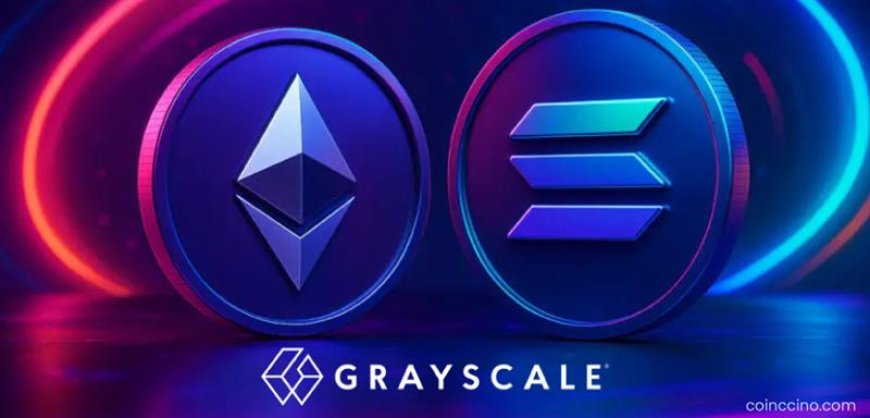Grayscale Launches First U.S. Staking-Enabled Spot Crypto ETPs for Ethereum and Solana
Grayscale has introduced its first staking-enabled spot crypto ETPs (exchange-traded products) in the U.S., featuring support for Ethereum and Solana. These products allow investors to gain direct exposure to crypto assets while potentially earning staking rewards—all inside a regulated product wrapper. (Reported via Barchart)

Market Context
After years of regulatory tightness around crypto, the U.S. is seeing more innovation in how digital assets are offered to traditional markets. While spot ETFs (especially for Bitcoin and Ethereum) have become more common, adding on-chain staking yield to such instruments marks a new frontier. This could make staking returns accessible to a broader investor base.
Technical Details with Attribution
- Grayscale’s new ETPs are built to combine spot exposure with on-chain staking yield for Ethereum and Solana.
- Pending regulatory approvals, these products (for example, the Solana ETP under ticker “GSOL” in some filings) are expected to be among the first in the U.S. to include staking features.
- The structure likely mirrors proposals Grayscale has submitted earlier to allow staking in its Ethereum Trust / ETPs, aiming to make staking yields available inside regulated vehicles.
Analyst Perspectives
Analysts consider the move a meaningful innovation—if executed properly. Providing staking yield inside an ETP could improve capital efficiency and appeal to income-oriented investors. However, risks remain: regulatory approval processes can be slow, staking rewards vary, and underlying smart contract / network stress could impact yields. The success of these ETPs may hinge on how seamlessly staking, custody, and compliance are integrated.
Global Impact Note
If staking-enabled ETPs succeed in the U.S., it could accelerate similar offerings globally. The line between DeFi and regulated finance would blur further, opening opportunities for more yield-integrated investment products. It also raises questions about how national regulators will treat staking income under securities, tax, and securities rules in different jurisdictions.



